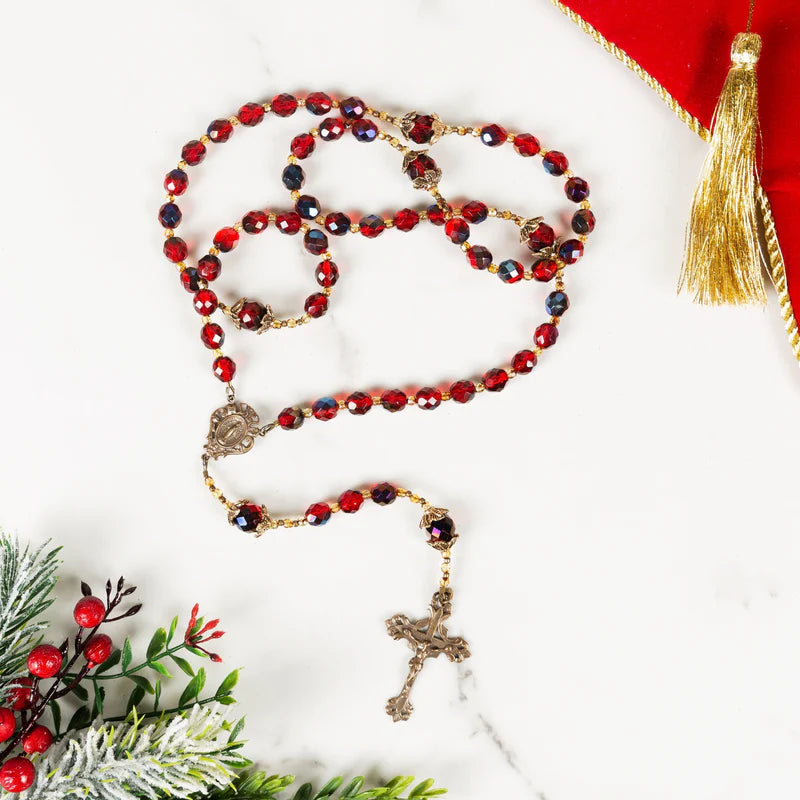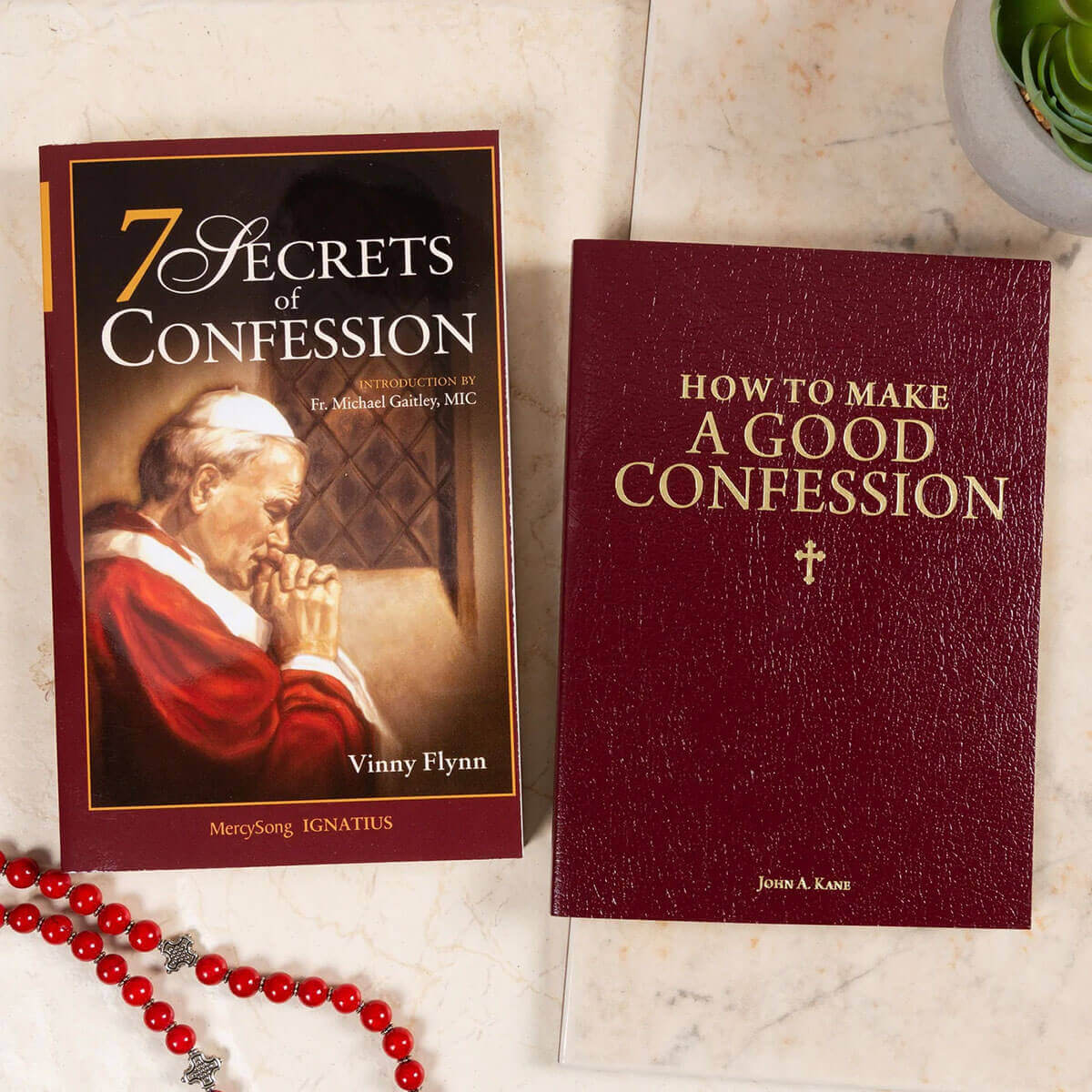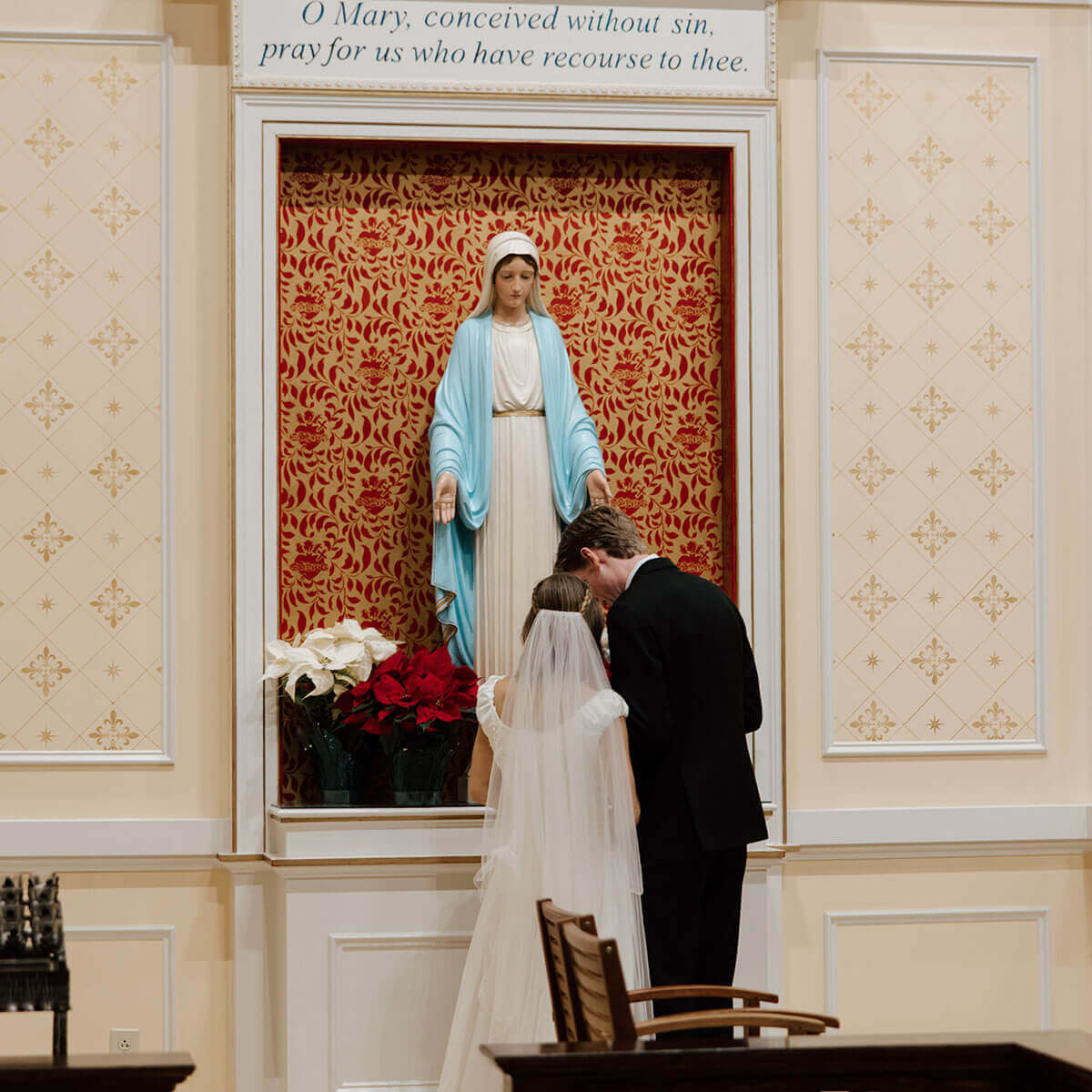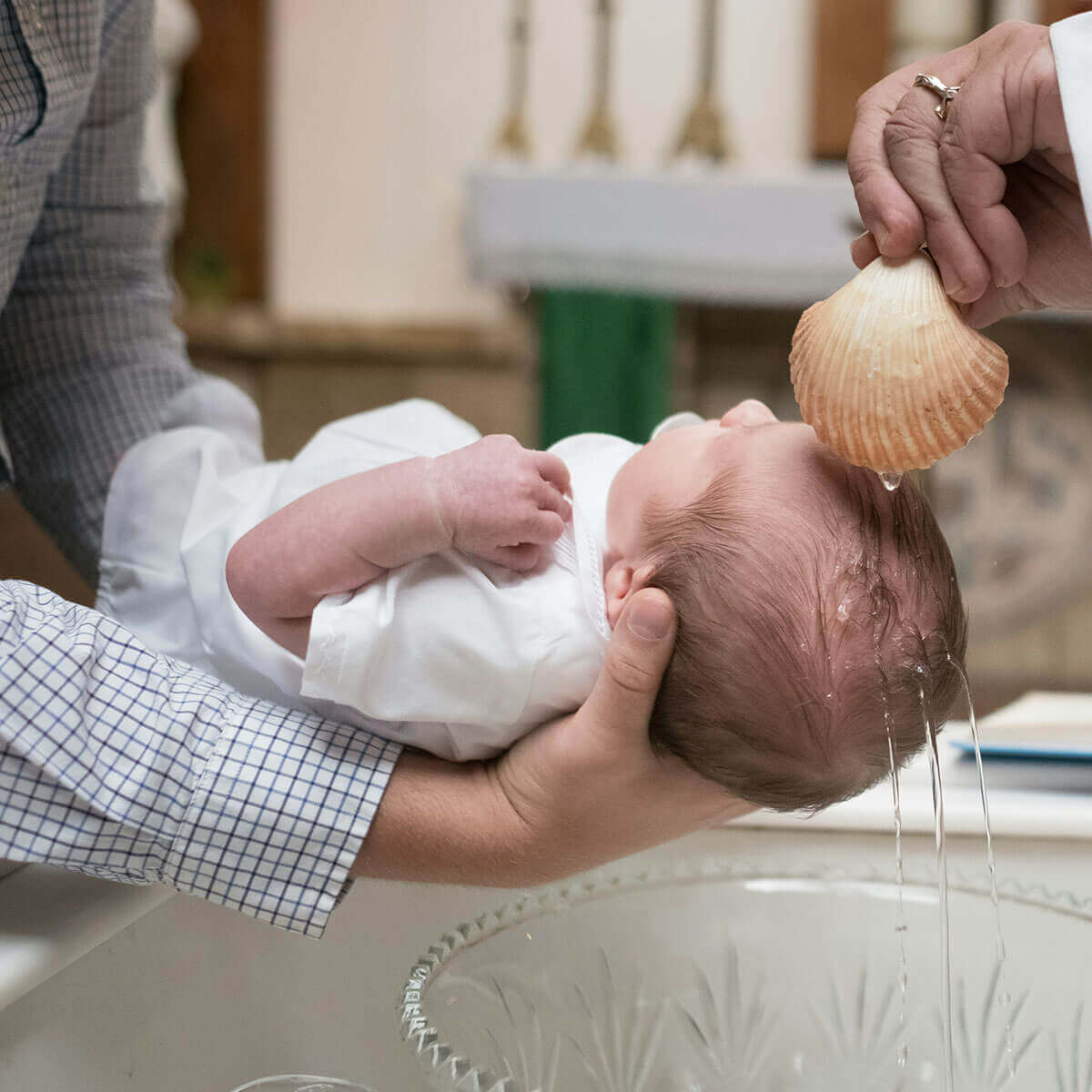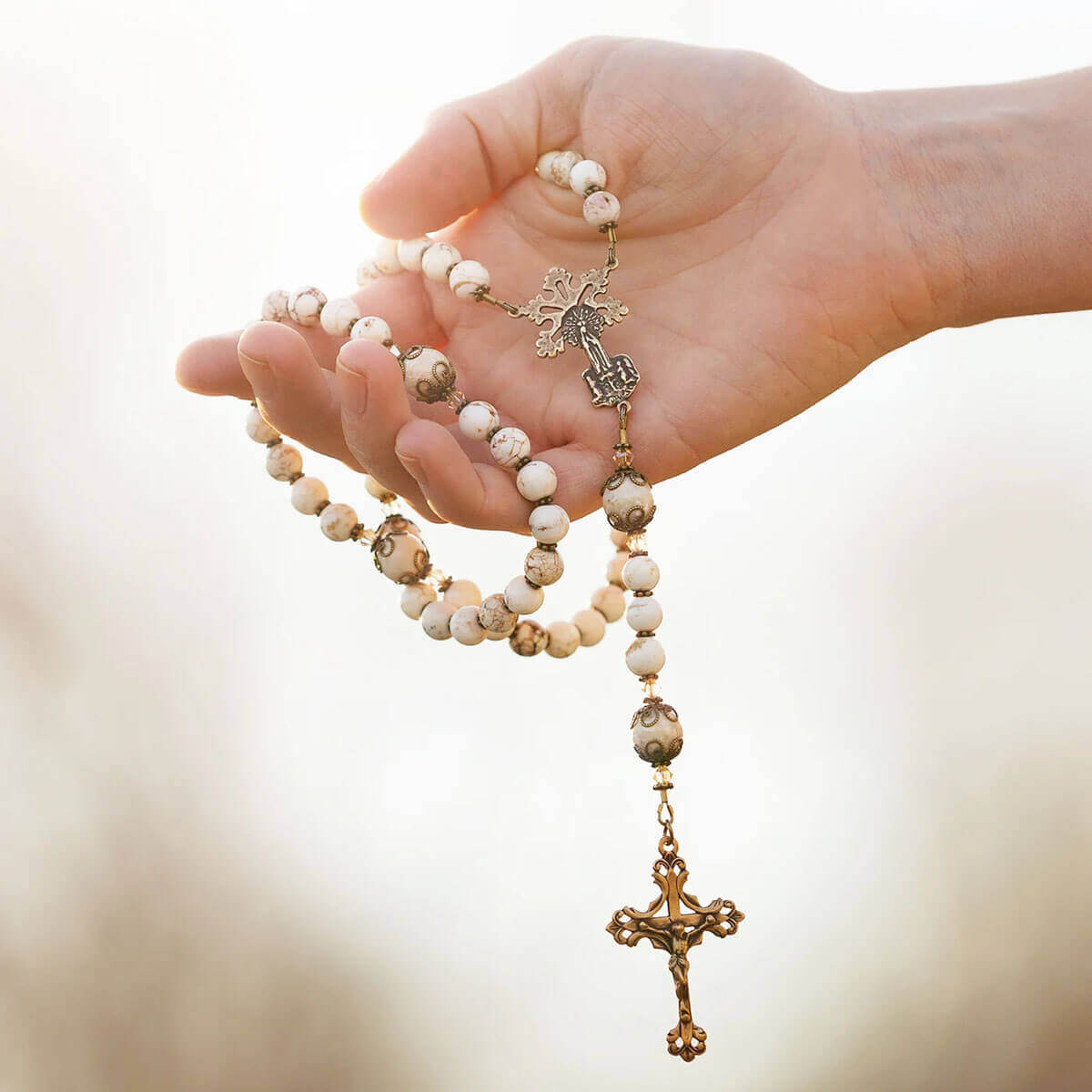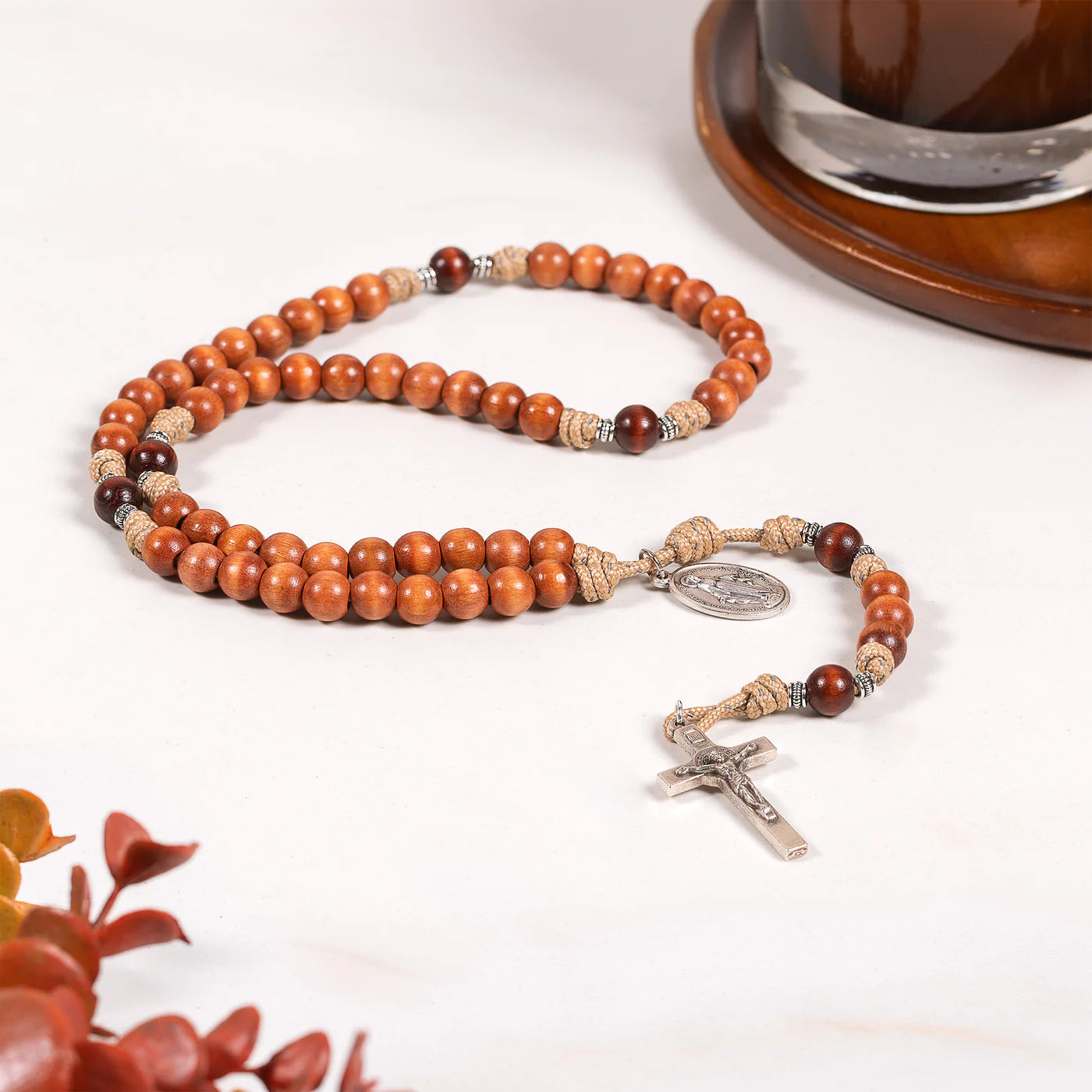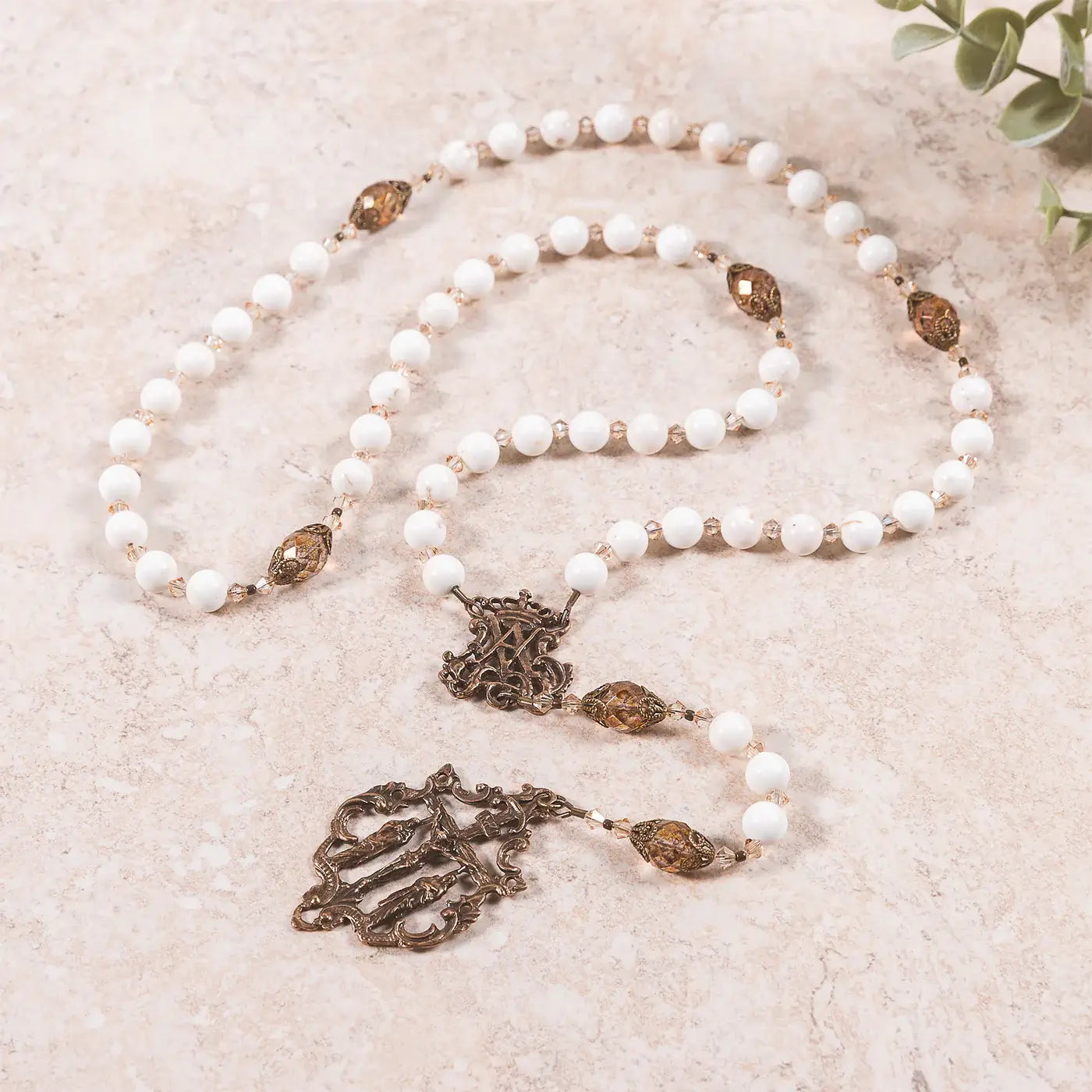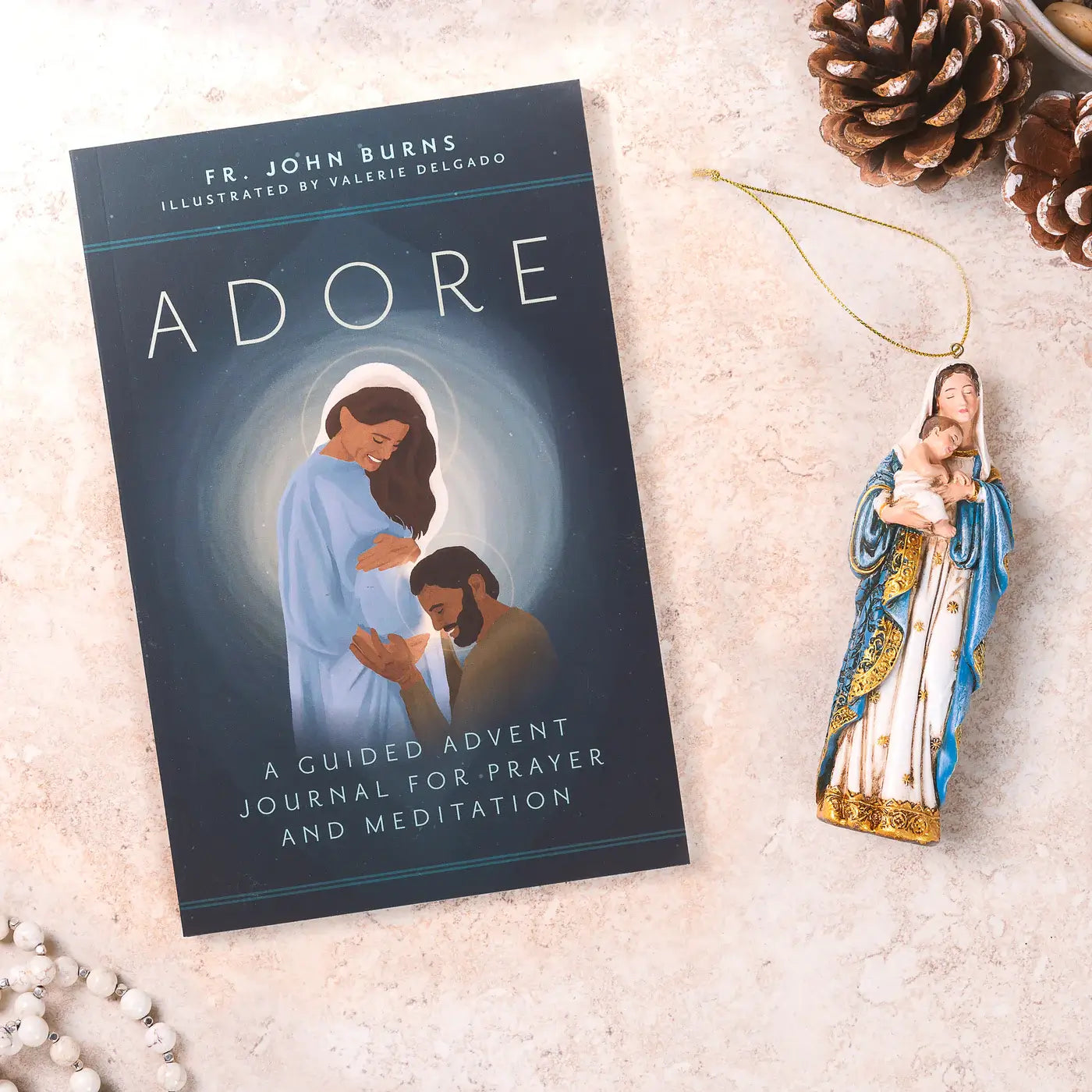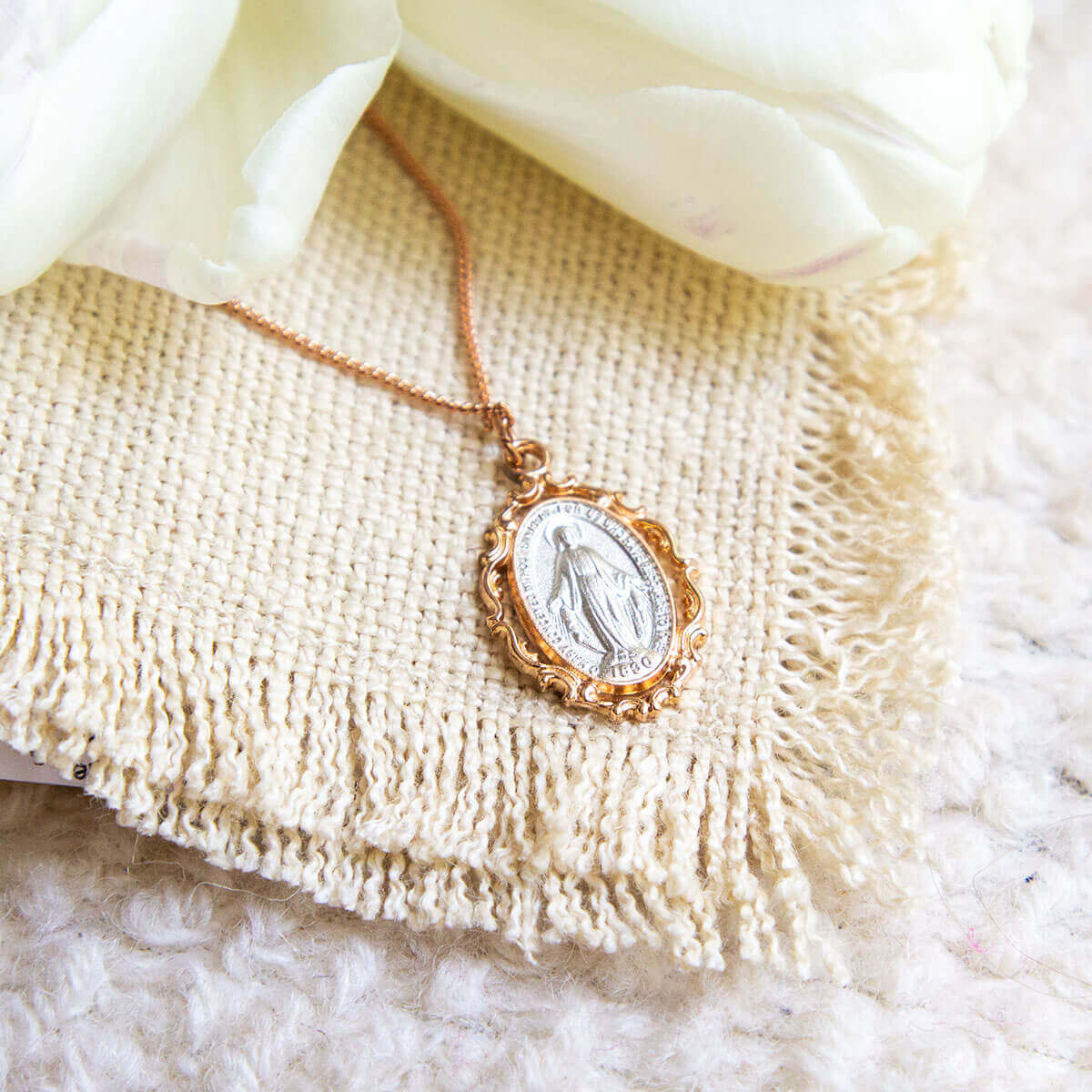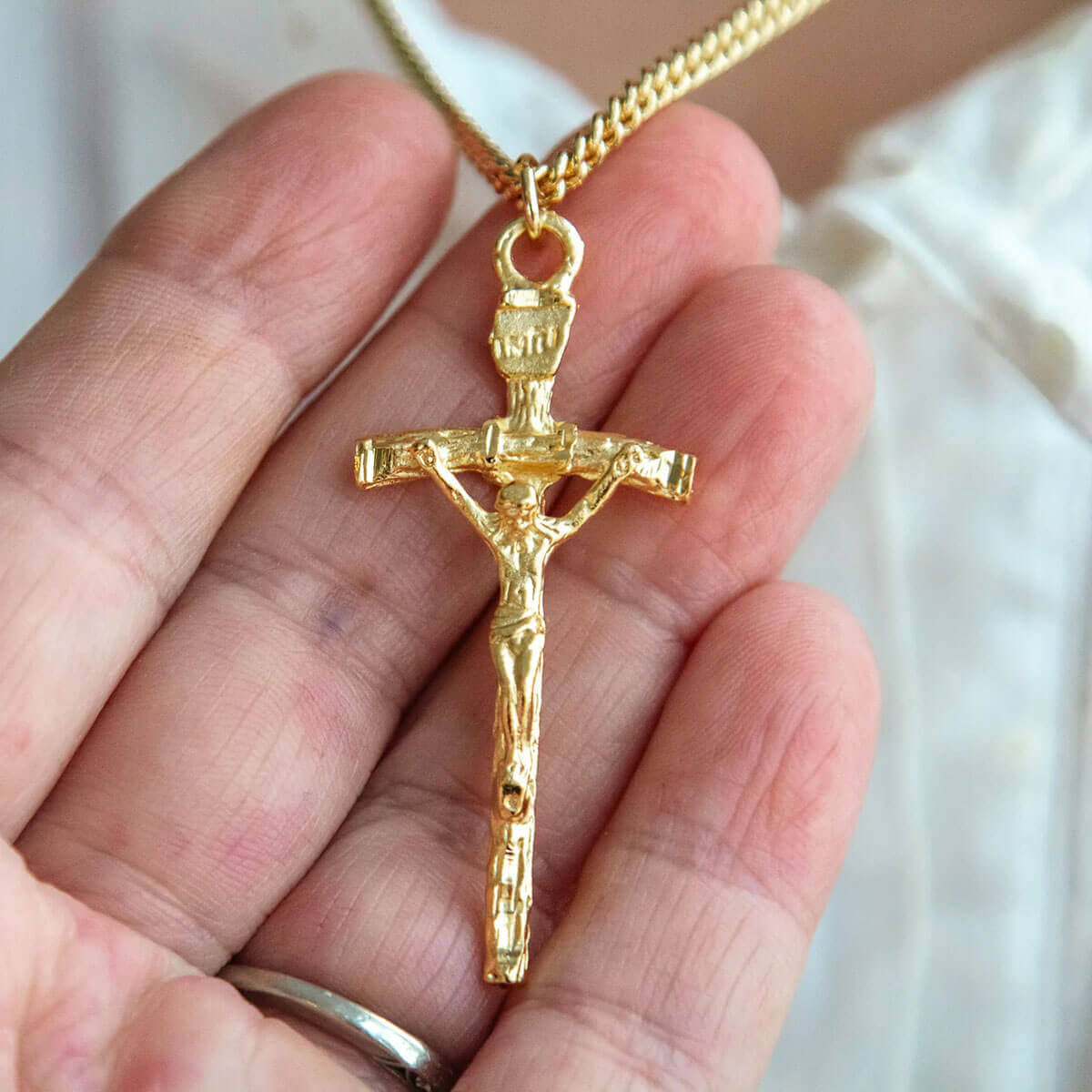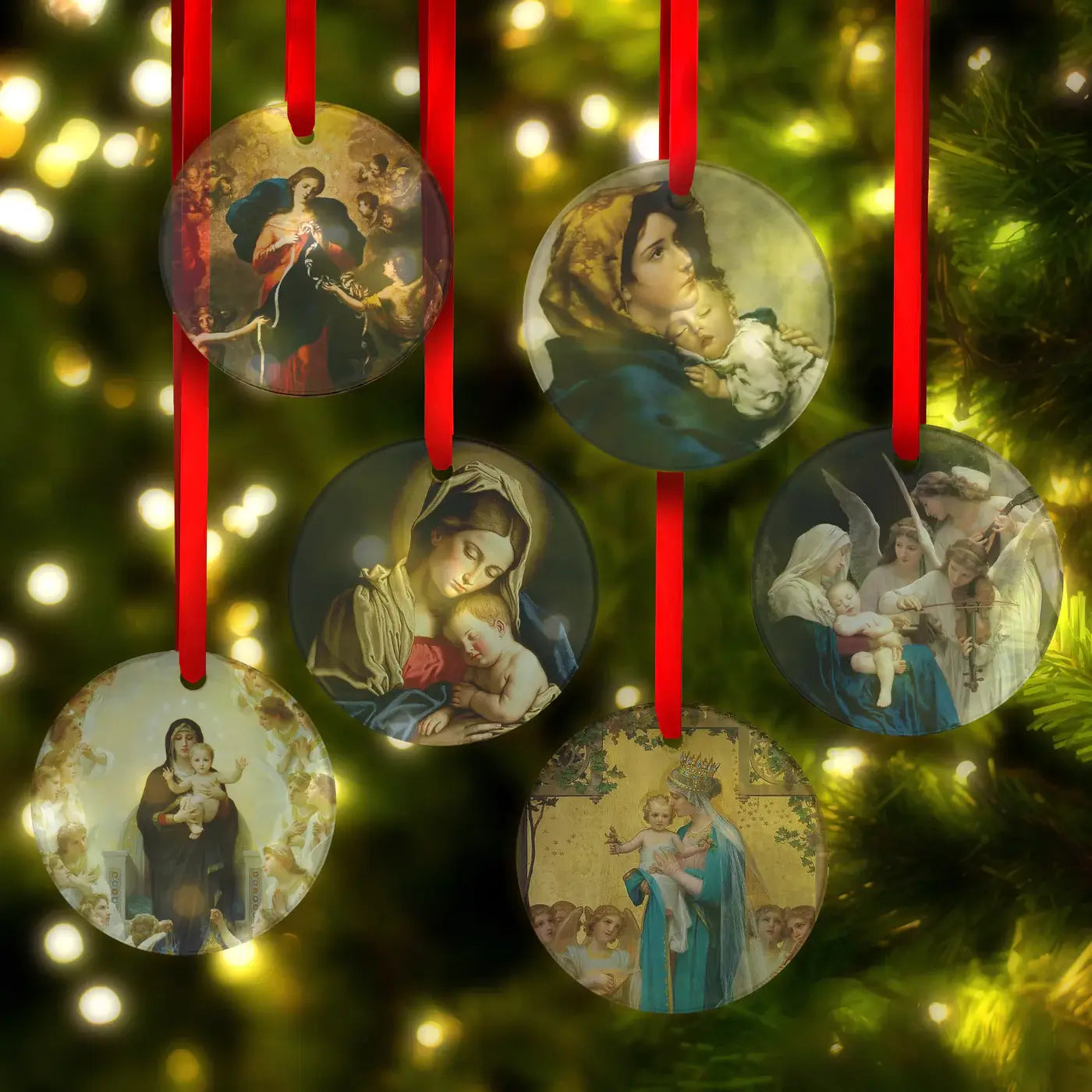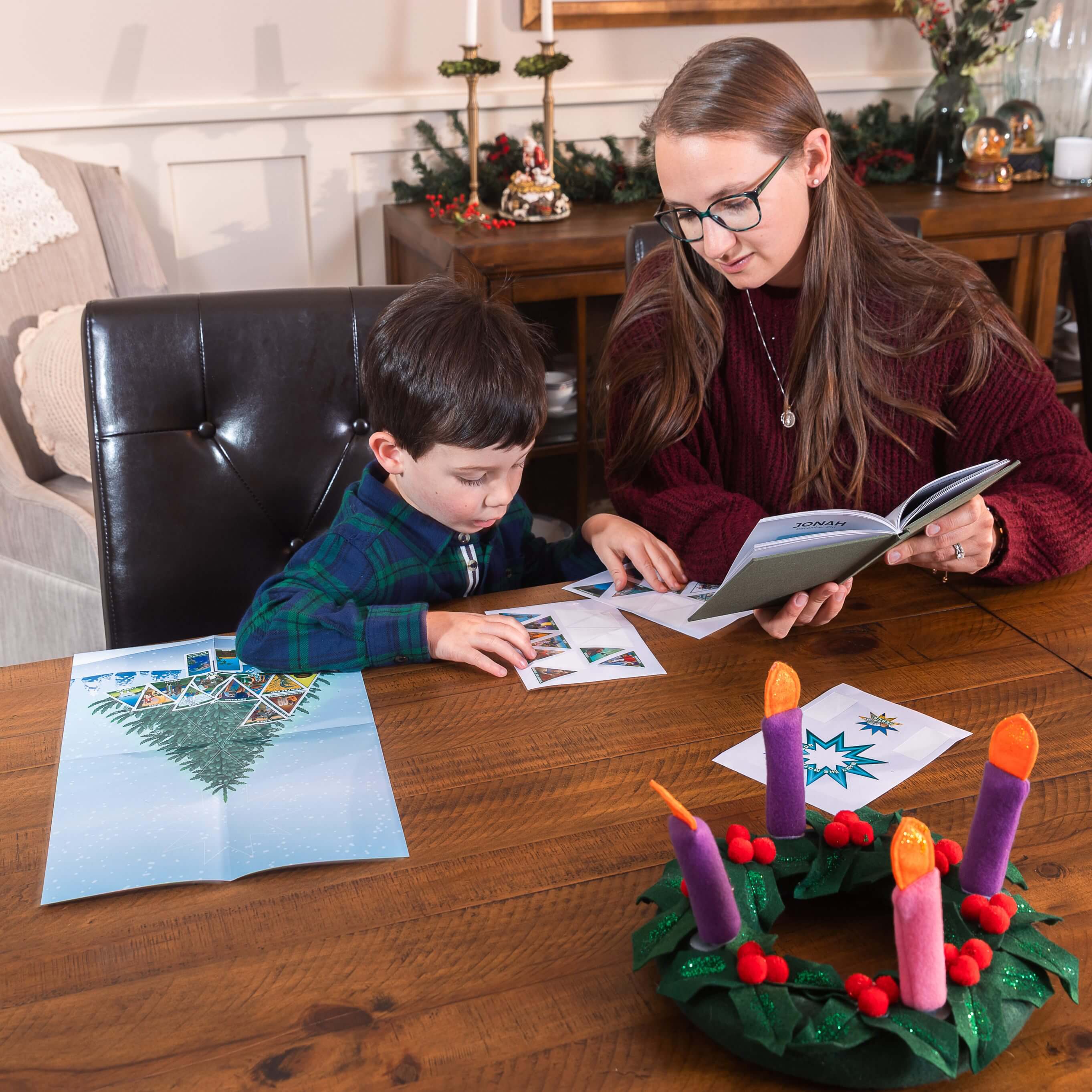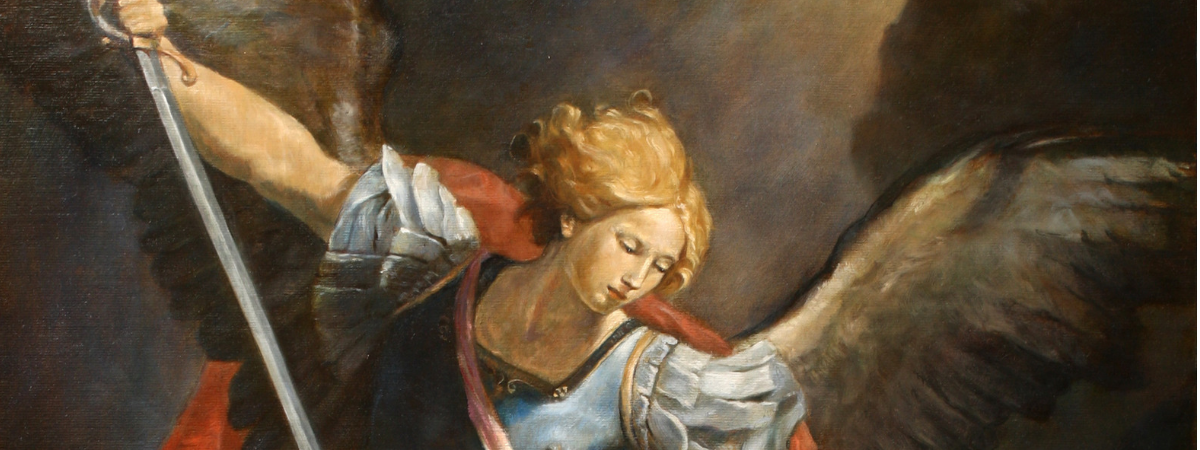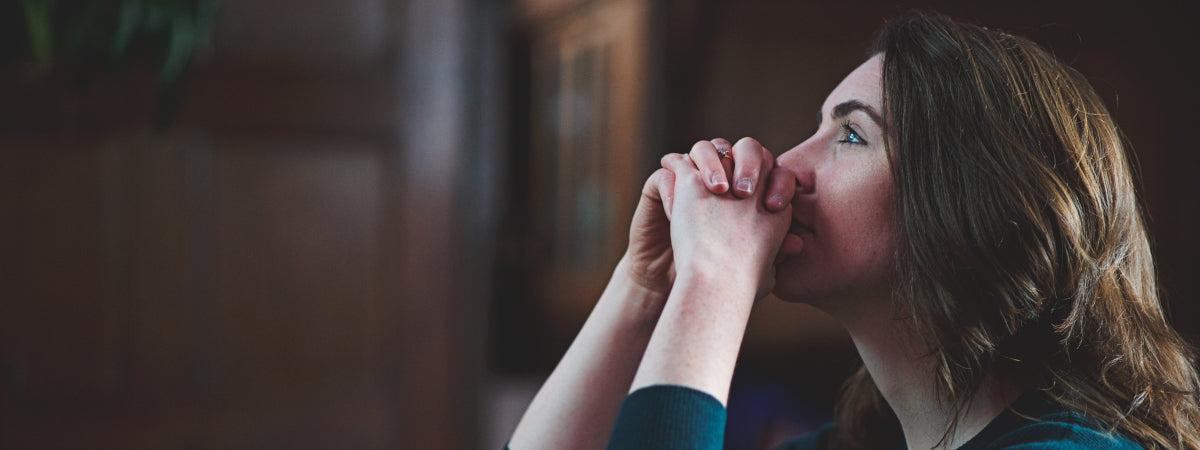The Church dedicates the month of September to Our Lady of Sorrows It's a devotion that has become a favorite of mine. As a convert, it took me a while to become comfortable with Mary and to trust her to bring my cares and sufferings to Her Son. After I heard a talk about Our Lady of Sorrows, I began to view Mary in a different light and to see her as the one who precedes us on the pilgrimage of life. She accompanies and sustains us on this journey, especially as we suffer, which we all do.
Traditionally, the Church meditates on the "Seven Sorrows" of our Blessed Mother: the prophecy of Simeon; the Holy Family's flight into Egypt; the loss of the Child Jesus for three days; the meeting of Mary and Jesus as he carried his cross; Jesus' crucifixion and death; Jesus' sacred body taken down from the cross; and Jesus' burial.
[[ivory-pieta-statue-on-black-stand]]
We can learn from Mary's sorrows how to approach our own afflictions. In The World's First Love, Venerable Fulton Sheen shows how we can learn from each of the seven sorrows of Mary and how even in our own vocations we can find consolation and encouragement by turning to her and remembering how her life was bound up with the sufferings of her Son.
1. The prophecy of Simeon.
To be a Christian means to be associated with Christ, who suffered and died for us. Mary was the first to feel this. Even as she brought her Son to the temple to participate in the celebration of the Presentation, she is "presented" with this prophecy from Simeon: "a sword your soul shall pierce." He tells her that she, too, will suffer. She immediately must face what this will ultimately mean for her. "If Mary, who was sinless, would with joy accept a Sword from Divine sinlessness, then who of us," say Sheen, "who are guilty of sin, shall ever complain if the same Jesus permits us a sorrow for the remission of our sins?" We, too, must suffer. So often I have thoughts like: "Why me Lord?" "Why this cross?" "What have I done to deserve this?" Unlike Mary, who accepted her suffering, I often want to run from it. Pride prevents me from accepting it, yet when I look to Mary I am consoled in understanding that she knows this. The sword which pierced Mary's heart did not come only from being a witness to the suffering of her Son—it also came from those who would pierce Him and deliver Him up. Her heart goes out to sinners. Her heart goes out to mine.
2. The flight into Egypt.
Sometimes our suffering is the result of mistakes we make and sometimes it comes to us from an external source. Either way we must try to endure with a trusting obedience as Mary did when she and Joseph fled to Egypt with Jesus. Fulton Sheen describes why we can turn to Our Mother even when we sin and how she will always look on us with compassion: "He, on His side, will not destroy their freedom, and they, on their side, will not choose Him. But as Mary in this second dolor was not angry with the wicked but unhappy for their sakes, so now in Heaven her compassion and love of sinners almost seem to rise with the measure of their sin." This is how Mary ultimately captured my heart, and why I turn to her so readily in times of trouble. I used to see Mary's sinlessness as an obstacle. After all, how could she understand me, a sinner? Yet when I think of her as my mother and as one who sorrows over my sinfulness, I learn to trust her. She sorrows over my sins because she knows that it makes me sorrowful, too. She knows that true happiness can only be found within the arms of Her loving and merciful Son. She does not stand in judgement, but instead reaches out her hand to deliver us to her Son who she knows is full of mercy.
3. The loss of the Child Jesus.
It is easy for me to think of Mary as always having had knowledge of her Son and that somehow this made it "easier" for her. Yet the loss of Jesus in the temple shows us that she did not always have that knowledge. She too suffered when she did not understand what He was doing and when she could not find Jesus. Her son was hidden from her and this brought her spiritual darkness. As Christians, we suffer a loss of God when we sin. To have him and then lose him by our own doing is a great suffering for us. Mary, although without sin, also knew the pain of losing her Son, and it is she who teaches us to go in search of Him. "Mary lost Jesus only in a mystical darkness of the soul, not in the moral blackness of an evil heart," says Sheen. "But she does teach us that, when we lose God, we must not wait for Him to come back. We must go out in search of Him; and, to the joy of every sinner, she knows where he can be found!"
4. The meeting of Mary and Jesus.
As a mother I can only imagine Mary's pain when she saw her suffering Son. We wish to take away the sorrow and suffering that our children inevitably suffer, and yet we know that they go through these trials only to be stronger in the end. Often the best we can do is listen and let them know we are there and that we understand. Jesus met His mother as He was being led to his execution. Mary did not protest in that moment, which would have been an understandable thing to do. She did not yell or scream or lash out at the soldiers and try to prevent them from torturing her Son more. Instead she met His gaze with a sorrow that revealed a deep knowledge of the truth of that hour. This is the same knowledge that she brings to us. We can draw comfort from her because she has an intimate knowledge of Jesus. Not only in the moment of His great suffering, but in our own sufferings, big and small, she meets our gaze with the love and compassion of a mother who knows our grief and who offers to us the only true consolation: her Son.
5. Jesus' crucifixion and death.
"Seeing his mother there with the disciple whom he loved, Jesus said to his mother, 'Woman, there is your son.' In turn he said to the disciple, 'There is your mother.' From that hour onward, the disciple took her into his own home..." (Jn 19:25-27).
Pope Saint John Paul II had a special devotion to the Virgin Mary, who he said was a gift which Christ Himself makes personally to every individual. I love what he said about Mary's place at the foot of the cross:
"There, at the foot of the cross, begins that special entrusting of humanity to the mother of Christ, which in the history of the church has been practiced and expressed in different ways...Entrusting himself to Mary in a filial manner, the Christian, like the apostle John, welcomes the mother of Christ 'into his own home' and brings her into everything that makes up his inner life."
[[15988]]
6. Jesus' body being taken down from the cross.
Mary is there throughout the life of her Son. She bore Him into this world. And she is there at His death. She is seen on the road to Calvary and meets the eyes of her Son there, bearing His sufferings, too. She is there at the foot of the cross. Those who attend someone's deathbed are usually those who are the closest to the dying, for it is an intimate and difficult experience. At the crucifixion most of the disciples fled, with the exception of John. Mary was there to see it through. That is why we can count on Mary to be there for our sufferings and sorrows and to never abandon us. Perhaps we feel that, like many of the disciples, we have abandoned God. Yet He will never abandon us. And Mary is there always to bring us back.
7. The Burial of Our Lord.
Venerable Fulton Sheen explains in The World's First Love that Mary will bear the scars of Christ's Passion in her own soul. "No one can tell the griefs that either bore, and no one can tell the holiness that she achieved through sharing, as much as she could as a creature, in His act of redemption... All the fatherless, motherless, sonless, husbandless, and wifeless griefs that ever tore at the hearts of human beings were now bearing down on the soul of Mary. It is hard to lose a son or a daughter, but it is harder to bury Christ. To be motherless is a tragedy but to be Christless is hell."
Mary shared our human nature in everything except sin. She suffered sorrows and understands the human condition not only because she experienced affliction, but because she feels the pain and sorrow of all the children whom God has placed under her care.
This is why we must "fly to thee, O Virgin of virgins, my Mother..."
[[129]]


